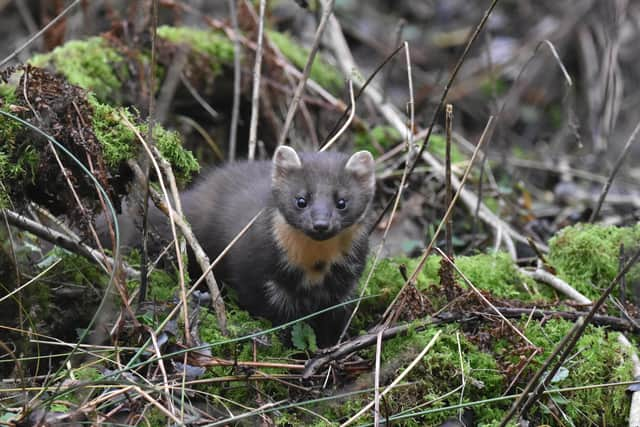Pine martens helping protect red squirrels at Crom Estate
and live on Freeview channel 276
Dr Joshua P Twining has spent many years conducting research at Crom.
His work included collecting scat (droppings) to investigate pine marten diet and interactions with squirrels, to collaring and radio-tracking pine martens to examine population health and behaviour.
Advertisement
Hide AdAdvertisement
Hide AdManaged by the conservation charity National Trust, the 2,000-acre estate at Crom, on the shores of Lough Erne, has a healthy and long-established population of red squirrels whose stronghold has proved to be largely resilient to the invasive grey squirrel.


Grey squirrels were first introduced to Ireland from North America in 1911 and rapidly spread. Grey squirrels transmit the squirrel pox virus to reds, a deadly virus to which greys are immune and compete with reds for food, threatening the very survival of the red squirrel here.
Dr Twining believes the red squirrel population at Crom is proving resistant to this hostile take-over because it has formed an “unlikely alliance” with the pine marten.
He said: “We know pine martens are opportunistic omnivores, switching food throughout the year and consuming whatever is available, including squirrels. Closer inspection of pine marten scats revealed that while this small predator eats both red and grey squirrels, they eat proportionally more grey squirrels than red ones. This apparent preference was likely linked to the availability of the grey squirrels as prey.”
Advertisement
Hide AdAdvertisement
Hide AdHe added: “Reds avoided feeders, and when visiting fed for shorter periods of time and were more vigilant – standing on their hind legs with their head upright and tail twitching from side to side, giving a clear warning to others that a predator was in the area.


“Meanwhile, the greys generally continued to visit and feed as if nothing had changed. In some cases, grey squirrel visits to feeding stations actually increased while their vigilance decreased around pine marten scent.”
National Trust ranger Matthew Scott added: “We don’t know exactly how many reds live at Crom, but we have a healthy, established population. We also have a stable pine marten population; we think there are around 12 on the site. Thankfully there’s no established population of grey squirrels, though we do have the occasional grey turn up and then disappear soon thereafter.
“We’re confident that the continued presence of the pine marten at Crom is helping to keep grey squirrel numbers down.”